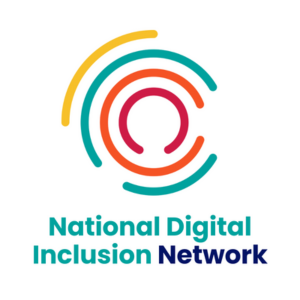Insights
INSIGHTS
All Topics
How charities can avoid 'revenue leakage'
Mistakes and poor organisation are costing charities more than £6bn a year, latest research has found. We look at the research and give advice to help charities to avoid the problem
Action is needed by charities to ensure they can tackle ‘revenue leakage’ through often simple problems such as human error and inaccurate date collection. According to research published in 2024 by consultancy Sagacity, charities are leaking £6.2bn a year. It found that almost half of lost money by charities “can be traced back to problems with data”.
Here we look in detail at the latest evidence around charity revenue leakage and explore the ways that charities can tighten up processes, to ensure every penny is spent on improving their organisation and supporting their communities.
“By not fixing the leaky bucket, charities are wasting an opportunity to provide more help to those in need,” warns Sagacity Chief Commercial Officer, Scott Logie.
Impact of revenue leakage
Sagacity’s research involved a survey of 50 charity finance experts, including directors of finance, chief finance officers, and chief strategy officers. Based on responses researchers estimated the cost of each problem based on official total revenue figures for UK charities.
This found that the most common causes of revenue leakages are:
- Human error such as putting decimal points in the wrong place
- Inaccurate and incomplete data being collected
- Incorrect payment details for donors, which can mean charities miss out on Gift Aid
- Mistakes in payments to third-party fundraising partners
Two thirds say such problems are hurting their profitability and hampering growth. A similar proportion say that if revenue leakage is not brought under control jobs may be lost. Three in five say much of their revenue leakage is to do with their poor processes with third-parties.
For example, almost all charities surveyed (96%) admit they are “wasting money” by paying fundraising agencies for donors “who only donate once, rather than long-term givers”.
Another third-party issue raised is that agents mistakenly record monthly donations as an annual donation. This is cited by 84% of charities. Sagacity’s Chief Product Officer, Dan Ret, says charities “expend considerable effort creating controls to support processes and systems”.
“The vast majority of the time, these controls work effectively” but he warns that “each organisation is not perfect”.
“Inevitably, a small number of control exceptions will lead to leakage. Over time these leakage events will have a dramatic impact on the charity’s ability [to meet objectives.”
Charities want to take action to improve, according to the survey. It found almost three quarters of charities are aware they need to prioritise preventing revenue leakage.
Diverting finances to priority areas, upgrading technology, hiring more staff, boosting salaries, and focusing on research and development are among top benefits of tackling revenue leakage mentioned by charities.
But barriers exist. One is a lack of financial expertise, with one in seven saying they unable to identify the causes of revenue leakage. Meanwhile, more than two thirds said they are too busy on their mission to get a handle on “the numbers”.
How can problems be solved?
Gift Aid
An important way to improve revenue leakage is to tighten up data collection to ensure Gift Aid can be claimed on donations. This means asking supporters when they donate to claim and ensuring there are no human errors in processing donations.
Sagacity’s work with one major charity found that nearly a third of its donors were employed but had not paid Gift Aid, said its Head of Business Development, Adam Tolcher. Tightening up data collection around Gift Aid could potentially earn charities an extra £139m a year.
Supporter journeys
Using customer relationship management (CRM) tools can improve charities’ ability to target donors. CRM systems can help improve charity supporter journeys, which fosters long term relationships, and prevents one off donors from drifting away.
Such tools can be accessed for free or at low-cost. For example, Red Cloud has free versions of its software to help charities manage donations and campaigns, as well as claim Gift Aid.
Improve planning
Charities are urged to take stock of their processes around revenue collection and assess where leakages are emerging.
Sagacity recommends creating a ‘control framework’ for each operational process and assess if their area areas where leakage can be tackled, and procedures improved. A roadmap of improvements that can be realistically made should also be created.
Testing and investigating revenue leakage controls put in place is important, to ensure they work.
Third-party relationships
With third-party relationships emerging as a key area where revenue is leaking, charities are being urged to prioritise the accurate recording of supporters’ details when awarding contracts.
Also, extra training should be offered to external agencies to ensure they are aware of the importance of tackling revenue leakage.
Charities should consider adding financial incentives and penalties for record accuracy to their third-party contracts.
Joe Lepper
More on this topic
Recommended Products
Featured Products
Related Videos
03 May 2024by Joe Lepper
What are UK political parties offering charities in 2024?
02 May 2024by Laura Stanley
How charities can find a CRM that works for them
02 May 2024by Josie Sparling
Seven key resources for advancing your skills in 2024
Our Events
Q&A session: An introduction to Microsoft Copilot
Join us on the 14th of May for our Q&A session. It will provide a whistlestop tour of Microsoft Copilot’s key capabilities, how they can help charities, and answer all your burning questions around Microsoft’s AI service.
We use cookies so we can provide you with the best online experience. By continuing to browse this site you are agreeing to our use of cookies. Click on the banner to find out more.


















